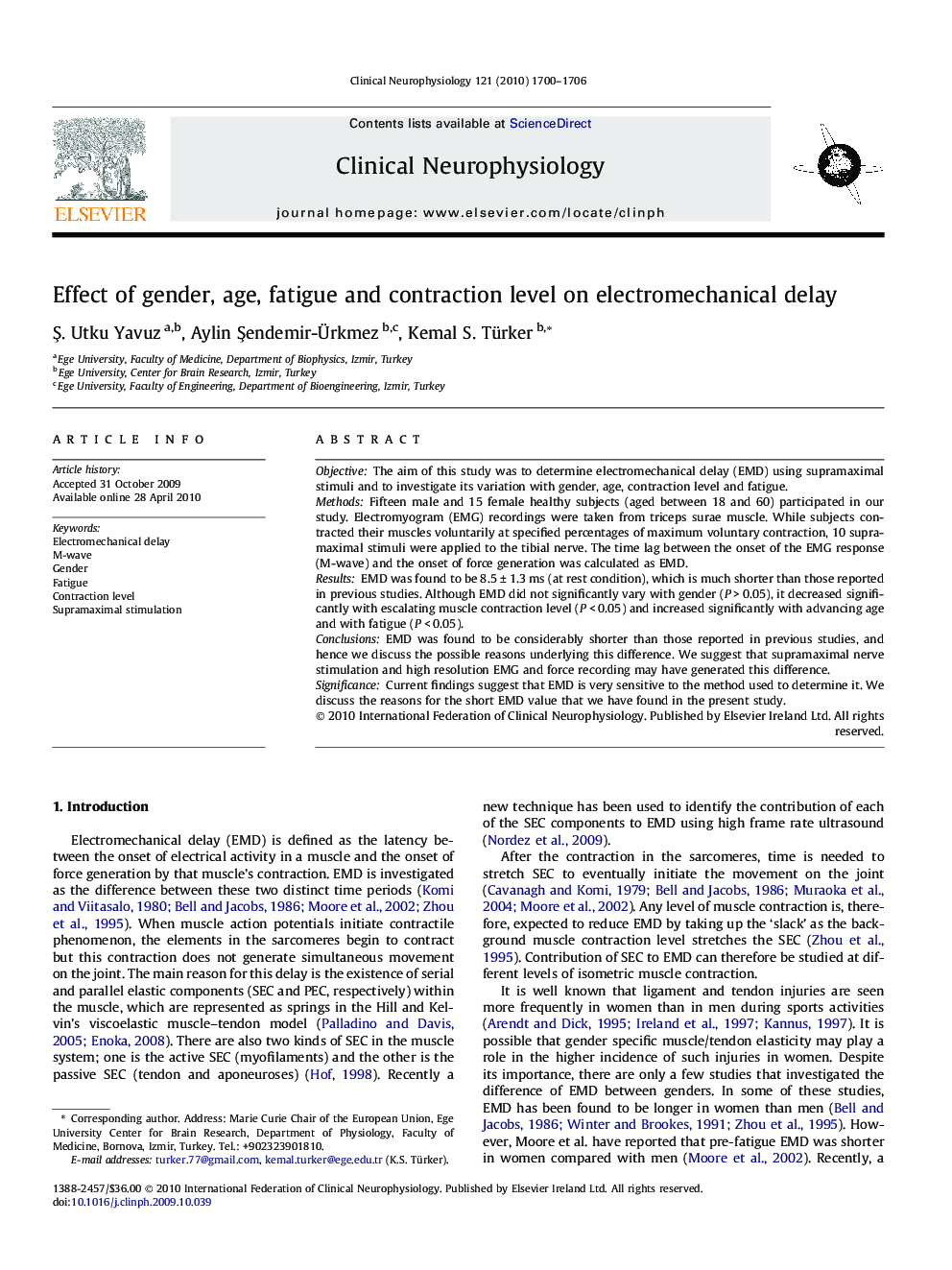| کد مقاله | کد نشریه | سال انتشار | مقاله انگلیسی | نسخه تمام متن |
|---|---|---|---|---|
| 3045118 | 1185015 | 2010 | 7 صفحه PDF | دانلود رایگان |

ObjectiveThe aim of this study was to determine electromechanical delay (EMD) using supramaximal stimuli and to investigate its variation with gender, age, contraction level and fatigue.MethodsFifteen male and 15 female healthy subjects (aged between 18 and 60) participated in our study. Electromyogram (EMG) recordings were taken from triceps surae muscle. While subjects contracted their muscles voluntarily at specified percentages of maximum voluntary contraction, 10 supramaximal stimuli were applied to the tibial nerve. The time lag between the onset of the EMG response (M-wave) and the onset of force generation was calculated as EMD.ResultsEMD was found to be 8.5 ± 1.3 ms (at rest condition), which is much shorter than those reported in previous studies. Although EMD did not significantly vary with gender (P > 0.05), it decreased significantly with escalating muscle contraction level (P < 0.05) and increased significantly with advancing age and with fatigue (P < 0.05).ConclusionsEMD was found to be considerably shorter than those reported in previous studies, and hence we discuss the possible reasons underlying this difference. We suggest that supramaximal nerve stimulation and high resolution EMG and force recording may have generated this difference.SignificanceCurrent findings suggest that EMD is very sensitive to the method used to determine it. We discuss the reasons for the short EMD value that we have found in the present study.
Journal: Clinical Neurophysiology - Volume 121, Issue 10, October 2010, Pages 1700–1706